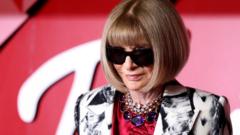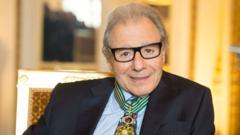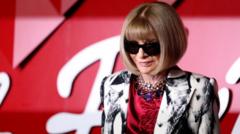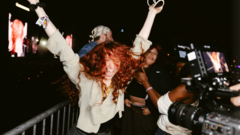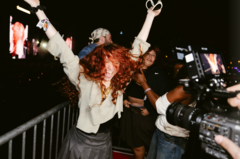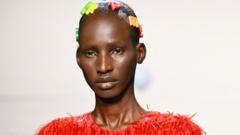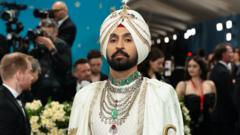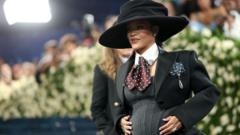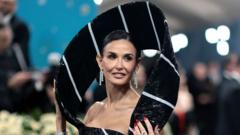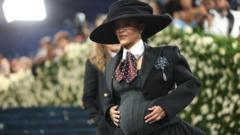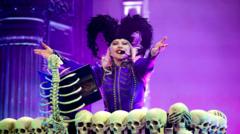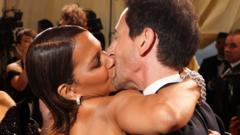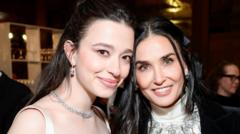Charli XCX's bold appearance at the Brit Awards has sparked a renewed interest in sheer dressing, highlighting ongoing debates about body positivity, modesty, and the impact of fashion.
The Evolution of Fashion: Sheer Outfits and the 'Free the Nipple' Movement

The Evolution of Fashion: Sheer Outfits and the 'Free the Nipple' Movement
The rise of see-through fashion is redefining norms while stirring controversy in Hollywood.
In recent months, the trend of 'naked dressing' has surged on red carpets and fashion weeks, embracing transparency and challenging traditional dress codes. Charli XCX made headlines last week for her audacious sheer black dress at the Brit Awards, which led to a flood of complaints to the media watchdog Ofcom. In her acceptance speech, she addressed the controversy directly, stating, "I feel like we're in the era of 'free the nipple' though, right?" This sentiment mirrors a wider shift in fashion, as celebrities have increasingly gravitated towards revealing clothing that often celebrates body positivity rather than merely shocking onlookers.
At other high-profile events, including the Oscars and Grammys, sheer outfits have made waves, with individuals like Bianca Censori and Paris Jackson similarly embracing nearly naked looks. The trend's resurgence appears influenced by the minimalist aesthetics of the 1990s, a period fondly recalled by contemporary thinkers witnessing the movement's revival.
Fashion designers, recognizing the appeal of transparency, have incorporated sheer elements into various collections, with statements reflecting cultural identities. Vogue highlighted how 'naked dressing' moved from being a rare occurrence to a staple in every fashion season. Notable designers like Dior and Stella McCartney have embraced these trends, emphasizing intricate designs that push boundaries.
Despite mixed opinions, many advocates argue that sheer dressing represents women's empowerment and a challenge to traditional fashion norms. Julia Pukhalskaia, a fashion stylist, views these choices as political statements reclaiming women's autonomy over their bodies. In contrast, some critics underscore the need for balance in how societal double standards prevail regarding men's and women's fashion.
Though celebrity culture continues to spark debate, it is clear that the 'free the nipple' movement, once a symbol of shock, has evolved into a broader conversation about fashion, identity, and societal expectations. As Hollywood embraces transparency, the dialogue surrounding what constitutes acceptable dress continues to evolve, reflecting both empowerment and a critical examination of longstanding norms.
At other high-profile events, including the Oscars and Grammys, sheer outfits have made waves, with individuals like Bianca Censori and Paris Jackson similarly embracing nearly naked looks. The trend's resurgence appears influenced by the minimalist aesthetics of the 1990s, a period fondly recalled by contemporary thinkers witnessing the movement's revival.
Fashion designers, recognizing the appeal of transparency, have incorporated sheer elements into various collections, with statements reflecting cultural identities. Vogue highlighted how 'naked dressing' moved from being a rare occurrence to a staple in every fashion season. Notable designers like Dior and Stella McCartney have embraced these trends, emphasizing intricate designs that push boundaries.
Despite mixed opinions, many advocates argue that sheer dressing represents women's empowerment and a challenge to traditional fashion norms. Julia Pukhalskaia, a fashion stylist, views these choices as political statements reclaiming women's autonomy over their bodies. In contrast, some critics underscore the need for balance in how societal double standards prevail regarding men's and women's fashion.
Though celebrity culture continues to spark debate, it is clear that the 'free the nipple' movement, once a symbol of shock, has evolved into a broader conversation about fashion, identity, and societal expectations. As Hollywood embraces transparency, the dialogue surrounding what constitutes acceptable dress continues to evolve, reflecting both empowerment and a critical examination of longstanding norms.


